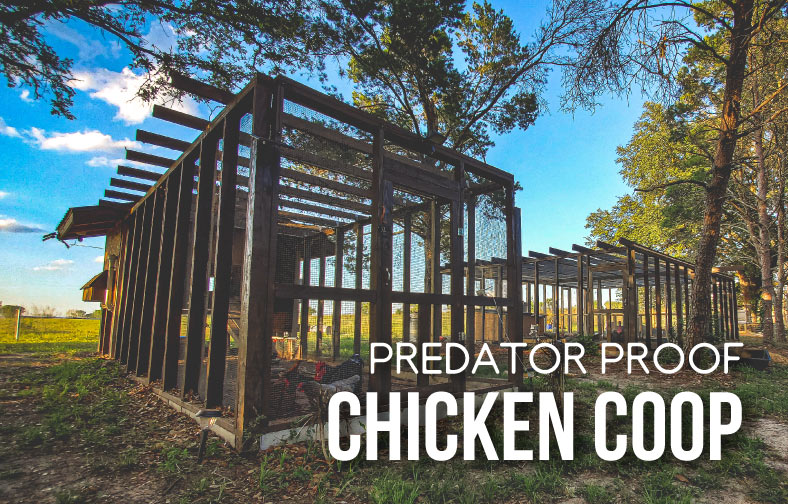Building our Predator Proof Chicken Coop
Choosing materials and design
After countless hours of scouring the web I found A LOT of very cool chicken coop designs, however I had a hard time finding a coop that one really sparked my interest and covered the main aspects of size and safety for our birds. I must have drawn up a dozen or so different designs before heading out to the local hardware store for supplies.
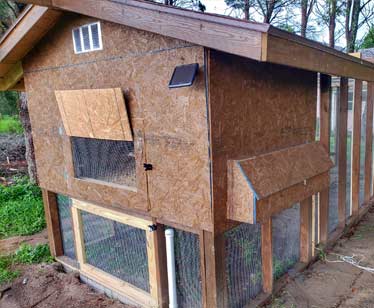
Installing Hardware Cloth for chicken predator protection
1/2″ Hardware cloth
I was able to get a couple of 100′ x 4′ wide 1/2″ hardware cloth which made for fairly easy installation.
Tip: After several failed attemps and a few choice words with hammers and multiple hand-style staple guns an air compressor style (pneumatic) staple gun makes easy work of securing the hardware cloth to the frame.
Protecting Your Chickens from Predators
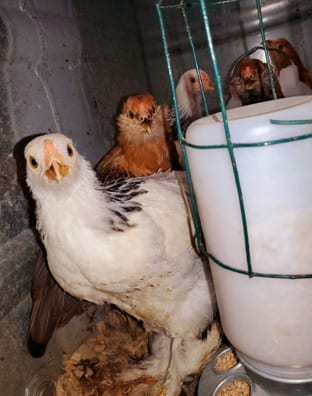
Chickens are prey animals and naturally are an easy snack for most of our local wildlife, hawks, eagles, skunks, raccoons, coyotes and the neighborhood free roaming cats/dogs were my main concerns. My initial thought was to throw some lumber together and wrap then entire enclosure in chicken wire and call it a day. Boy was I wrong.
Chicken wire (while i believe is falsely named) really is only good for one thing. Keeping chickens IN. Practically every other type of animal can easily bite or rip through chicken wire. After plenty of research and reading many chicken owners horror stories I decided that our structure needed to be secure and the decision was to use a much more durable 1/2″ hardware cloth enclosing the entire structure.
Protecting Our Flock from Severe Weather
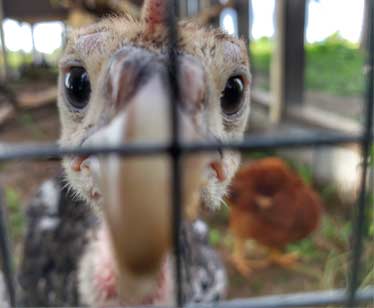
Living in central Florida brings its own challenges when deciding to house outdoor animals. The inevitable Hurricane and seasonal strong thunderstorms are not only a matter of if but when they will decide to show up. In planning I wanted a structure that was very strong, Probably stronger than what most chicken coops are designed for but it was more for peace of mind that i decided to over build it.
In addition to the occasional storm rolling through another weather challenge we face is heat. While we are fortunate that our winters are relatively short lived the other side of the coin is Central Florida gets hot, really hot.
Proper ventilation of a chicken coop is important for multiple reasons. Humidity is the biggest problem inside of a coop and proper ventilation allows for heat to escape while ensuring a draft-free interior as both are important for maintaining a healthy flock.
As well as proper ventilation of the chicken coop we also needed a way to extract the built up heat within the coop during the hottest days of the year. The problem was I didn’t have any close power source and running an extension cord across the front yard was not an adequate solution. I wanted some type of fan that could run during the hottest parts of the day in order to extract any built up heat within the coop itself. This was the main reason I started down the solar power path.
Building a Predator Proof Chicken Enclosure

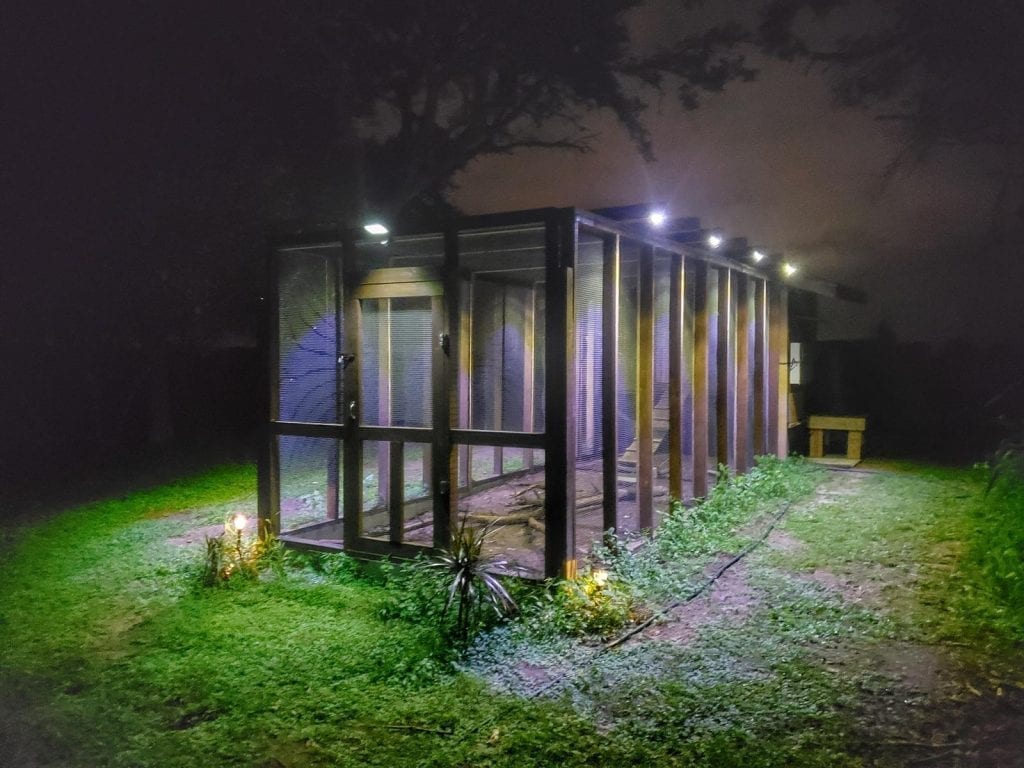
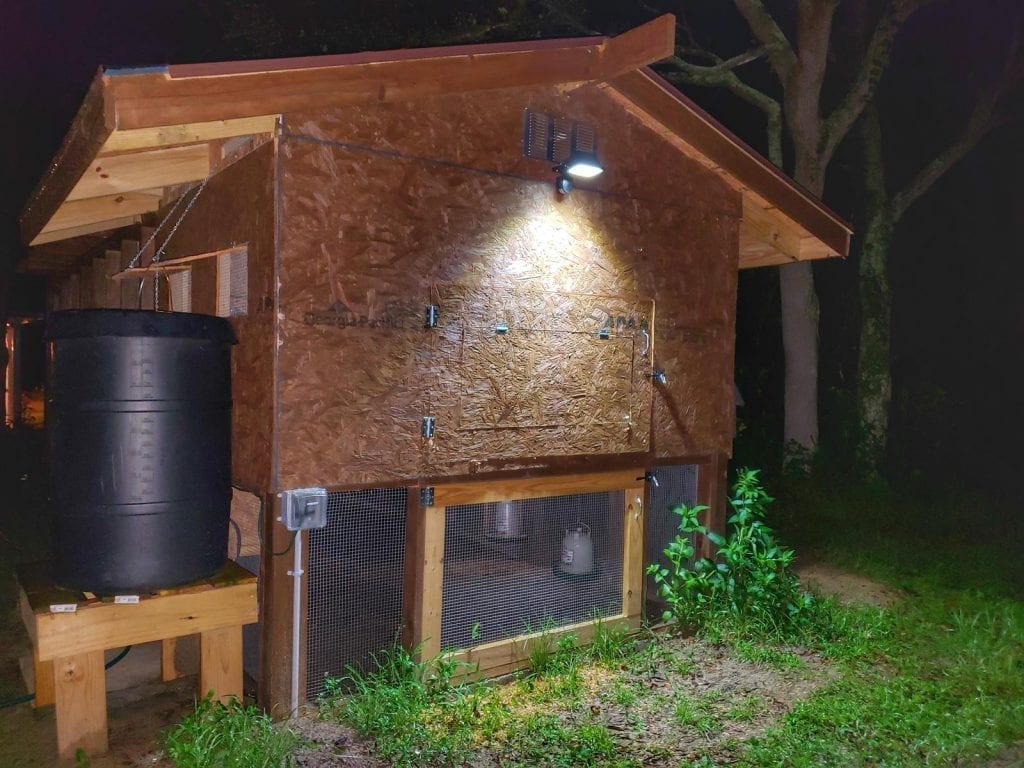



The structure measures 8′ wide and is 24′ long providing a run space of 192 sq ft. The chicken coop itself measures 8′ x 8′ and is elevated 3′ off of the ground, providing an interior space of 64 sq ft.
The entire coop is built from pressure treated lumber. In my research I had read mixed reviews on whether to even use PT wood for chicken coop construction but at the end of the day I felt using pressure treated wood for our build would provide us the long lasting and structurally sound, worry-free chicken coop we were looking for.
The coop is securely anchored with 6 4″x4″ PT lumber sunk 3′ into the ground and each post received an entire bag of concrete.
After completion of the build the entire exterior was stained to help protect the wood from the elements.
Easy Chicken Feeder
When it came to feeding the birds i wanted an easy way to refill their food quickly and ensure that it lasted at least a couple of days. This was easily done by hanging a traditional chicken feeder under the coop and running a length of pipe to the outside of the coop for easy filling.
Auto Chicken Watering Bar
Much like the food situation i really didn’t want to have to refill the water everyday so coming up with a solution that would keep the water fresh and bug/bacteria free was essential. The watering bar we created works perfectly, we simply hooked up a feed line from the bottom of a 55 gallon rain barrel. water barrel is screened off to protect from bugs entering and laying eggs in the water supply. Not wanting stagnant water we also hooked up a low powered aquarium aeration pump to circulate and prevent the water from sitting too long.
Solar Powering a Chicken Coop
Solar Power Equipment
The coop is powered by a single 100 watt solar panel that runs through a controller to a Deep Cycle marine battery housed in the lower part of the coop. New panels and additional batteries will be added in order to provide more consistent power for the future builds in and around the chicken coop.
The battery powers a terminal which we can easily add multiple devices if needed.
Solar Lighting for the Chicken Coop
There are a number of reasons why you may need to check on your flock after the sun goes down, i wanted an easy way to light up both the interior and exterior of the coop if such situations would arise. I was able to find 3 watt LED lights that provide a lot of light and after installing I am very happy with the performance.
Chicken Coop Flooring Materials

Initially I was determined to build a low-maintenance chicken coop and all signs pointed to the deep litter method. We lined the floor with a clearance piece of linoleum flooring from our local hardware store to protect the wood from moisture and filled the coop with about 6″ of pine bedding. Initially things were great however, we soon began to notice not only the smell but a lot of bugs had decided to take up residence in the coop. We have since removed the pine shavings and have opted for plain ol contractors sand. Unlike wood shavings sand holds a lot less moisture and in our opinion is much easier to maintain a clean coop. Sand naturally will not hold moisture and cleaning the coop is much easier than the pine shavings. Its more like cleaning a giant cat litter box.
Choosing Chicken Nesting Boxes
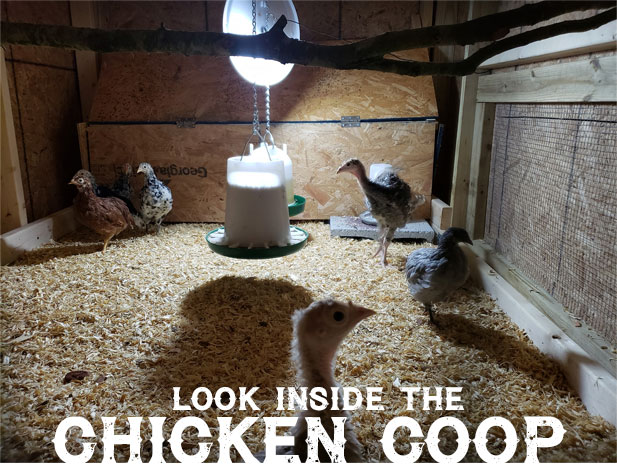
Cleaner chicken eggs with roll-away nesting boxes
A roll-away nesting box can save a lot of time and produce cleaner eggs! Keeping the eggs clean – Chickens are notorious for being dirty, walking back to the house with poop and dirt covered eggs was not really high on my list so I was looking for chicken nesting box options which would most likely accomplish two things.
Chicken Roll Away Nest Boxes
1.) keep the eggs as clean as possible
2.) protect the eggs from being broken or eaten.
There are many different types of nest boxes available some hand made others purchased from local stores and some made from everyday items around the house.
But after all of this work to build our coop, who wants dirty eggs? Not this guy, lol.
Roll-away nest boxes seemed to be the best solution to the multitude of problems facing chicken owners.
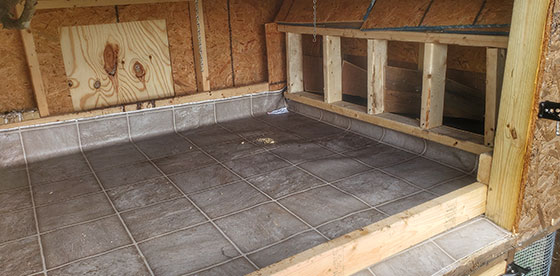
DIY Chicken Roll Away Nest Box
A roll-way nest box can be purchased or built, it is simply a nesting box built with the floor on an angle that allows the eggs to roll-away into a safe compartment that is easy to access for the chicken owner but difficult for the chicken to step on or use as a snack.


